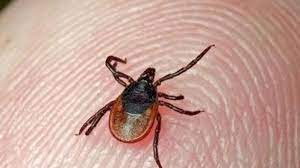
The “nose-bleed” fever that has been infecting Iraqis has spread to a highly populated India. The tick-borne illness can be deadly and is transmitted to humans by bites of infected ticks, and by direct contact with blood or tissues from infected humans and livestock.
India’s population is 1.38 billion as of 2020. Iraq has been dealing with an ongoing outbreak of nose-bleed fever or Crimean-Congo hemorrhagic fever (CCHF) and so far this year 212 cases were detected and 27 people have died. India has now reported two cases from Gujarat and one death. With 62 million people in Gujarat, this disease does have the potential to spread quickly.
Crimean-Congo Hemorrhagic Fever Outbreak In Iraq
According to the World Health Organization (WHO), nose-bleed fever is endemic in Africa, the Balkans, the Middle East and Asia.
As per its estimates, 3 billion people are at risk with 10,000 to 15,000 infections every year and an estimated 500 deaths each year.
The first CCHF case in India was reported in 2011 from Gujarat. According to the WHO’s geographic distribution of nose-bleed fever cases, India reports 5 to 49 infections each year. -The Federal
The World Health Organization explained the CCHF as follows:
“The hosts of the CCHF virus include a wide range of wild and domestic animals such as cattle, sheep, and goats. Many birds are resistant to infection, but ostriches are susceptible and may show a high prevalence of infection in endemic areas, where they have been at the origin of human cases. For example, a former outbreak occurred at an ostrich abattoir in South Africa. There is no apparent disease in these animals.
“Animals become infected by the bite of infected ticks and the virus remains in their bloodstream for about one week after infection, allowing the tick-animal-tick cycle to continue when another tick bites. Although a number of tick genera are capable of becoming infected with the CCHF virus, ticks of the genus Hyalomma are the principal vector,” the WHO explained.
About 80 to 90 % of humans are infected through a tick bite or direct contact with the blood of infected ticks, or direct contact with blood/tissues of infected wild animals and livestock. Secondary human-to-human transmission occurs through direct contact with the blood, secretions, organs, or other body fluids of infected persons. High transmission risk when providing direct patient care or handling dead bodies (funerals).
The most common symptoms of CCHF include abrupt onset fever, chills, shudders, myalgia, headaches, sicknesses and vomits, abdominal pain, and arthralgia. After a few days, people experience bleeding from mucous membranes, hematomas, ecchymosis, melena, hematuria, nose bleeding, vaginal bleeding, bradycardia, thrombocytopenia, and leukopenia, according to the WHO.
The mortality rate from CCHF, as per the WHO, is approximately 30%, with death occurring in the second week of illness. In patients who recover, improvement generally begins on the ninth or tenth day after the onset of illness.
Watch this once closely. This disease, unlike COVID or the monkeypox, can actually do real harm to society by killing a massive amount of the population if it continues to spread.





0 Comments